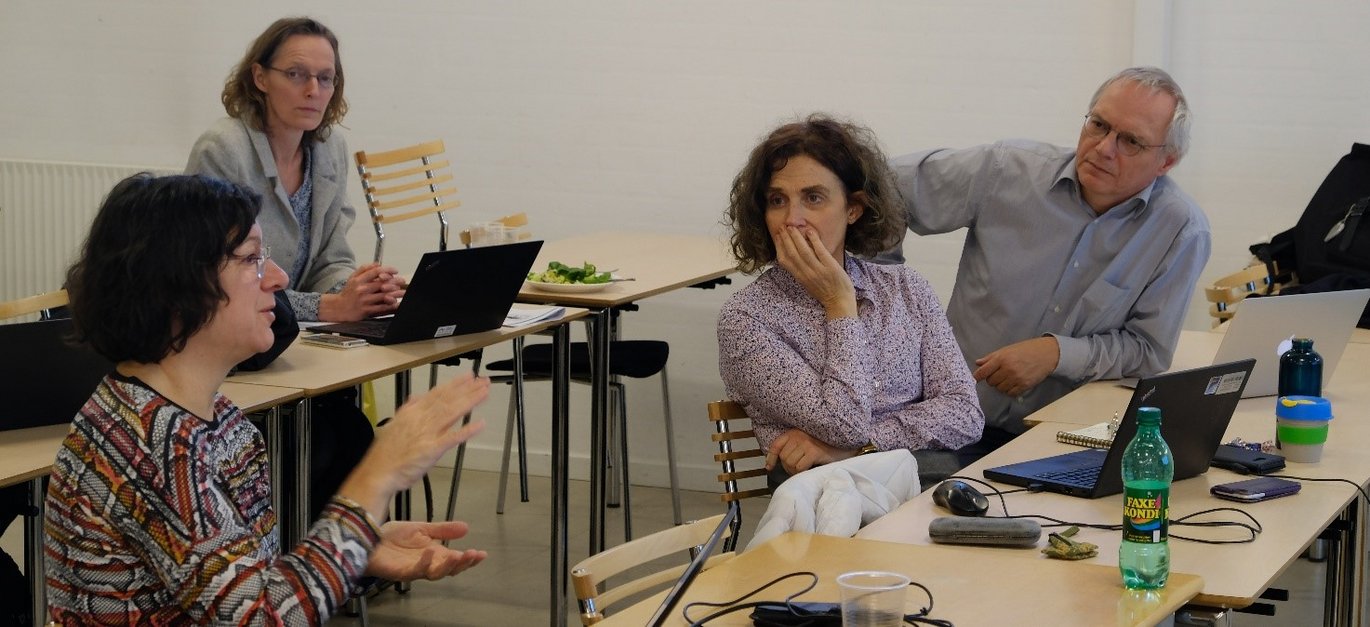PEER project about SDG implementation and management
On the 26th and 27th of November an international team of scientists who form the PEER group met at DCE, Aarhus University to discuss the progress of the project which deals with risk management across the SDG’s set down by the UN.

Researchers from five European Environmental research Institutes are collaborating in the PEER-TRISD-project - ‘Tackling and managing risks with SDGs (Sustainable Development Goals)’. The SDG’s are 17 goals, also known as Agenda 2030, all countries in the world should strive to help reach before the year 2030 according to the UN. They focus on dealing with problems like poverty, hunger, health and much more including the reduction of climate change and increased protection of the environment.
The project is initiated by PEER – Partnership for European Environmental Research and is a collaboration between scientists from Environmental Institutes in Germany, France, Finland, Norway and Denmark. They will attempt to analyse and project whether the SDG’s are realistic and achievable goals for the world community to reach before 2030. Amongst other things, they will look at the effect of how reaching one goal can affect the possibility of reaching another.
“We are looking at which risks are created from implementing the goals or not. We do not just focus on individual goals but look for potential interactions between the goals since realizing one may result in an unintended compromise of some of the other goals,” says Kurt Jax, co-project leader and deputy department head at the Department of Conservation Biology, at the Helmholtz-Centre for Environmental Research (UFZ) in Germany.
The PEER project runs over a period of three years from 2018-2020. The kick-off meeting was held at DCE AU in Denmark on the 26th and 27th of November. Here the group discussed the project and the first of three workshops began taking shape in order to attract as many potential stakeholders to take part in/collaborate with the project as possible.
“In January, we are having a workshop for potential stakeholders in Brussels to hear about their challenges in regards to the SDG’s. We aim to begin a continuous collaboration with the stakeholders and together create tools to deal with the risks in regards to Agenda 2030,” says Eeva Furman, co-project leader and director of the Environmental Policy Centre at the Finnish Environmental Research Centre (SYKE) in Finland.
One of the scientists in charge of the Danish contribution to the PEER project is senior researcher Anders Branth Pedersen from DCE – Danish Centre for Environment and Energy at Aarhus University. In his work, he focuses primarily on environmental policy analyses and environmental governance – in this case, the 17 SDG’s set down by the UN.
“For my part, the biggest challenges pertaining to this project is partly, that the SDG’s are very broad reaching goals even though they are made somewhat concrete by a series of indicators, and partly that the SDG’s have the potential to affect each other. From a scientific standpoint, the challenge will be to create a scientific design that can handle the complexity of the research. We are trying to solve that by both painting with broad strokes and zoom in and focus on a string of concrete cases all over Europe,” says Anders Branth Pedersen.
The project will run for another two years with collaboration between the institutes in the group and many other scientists and stakeholders from all over the world if all goes well. In the end, it will result in one to two policy briefs, a set of communication efforts on risk management, solutions and media outreach on the improved opportunities to reach the SDG’s through PEER’s improved risk management.
